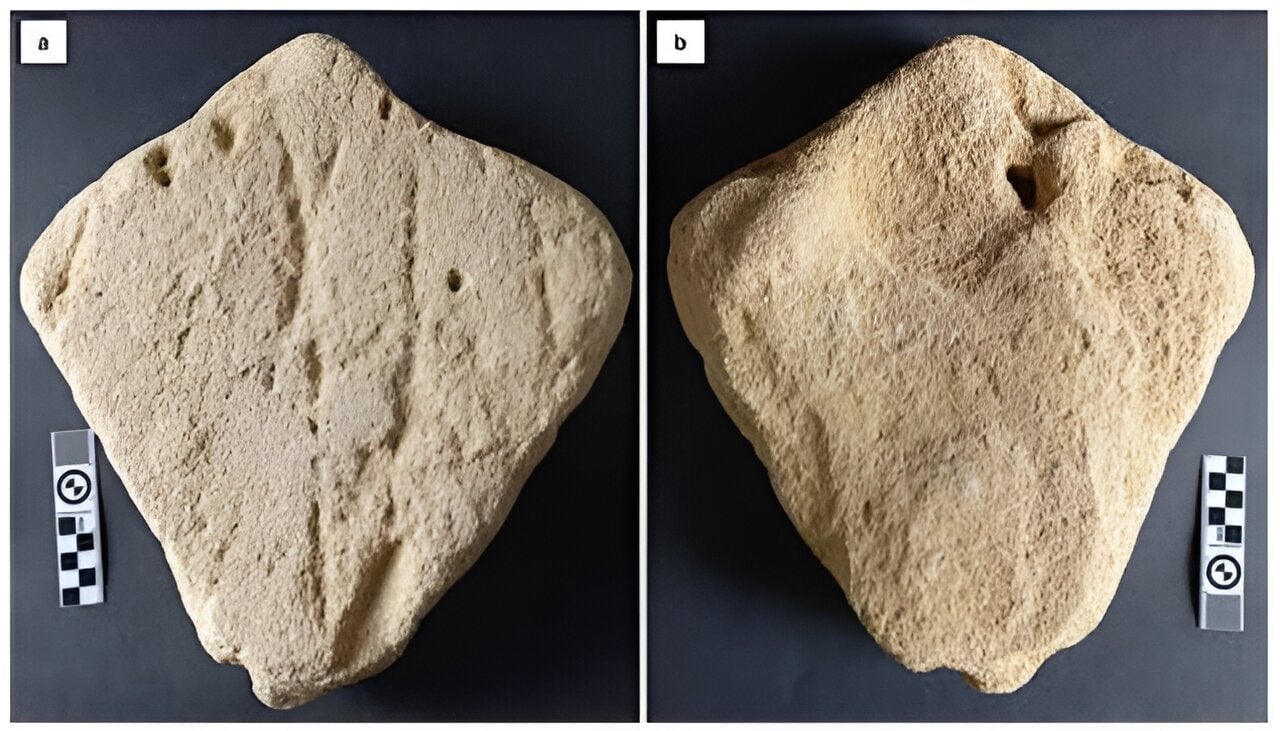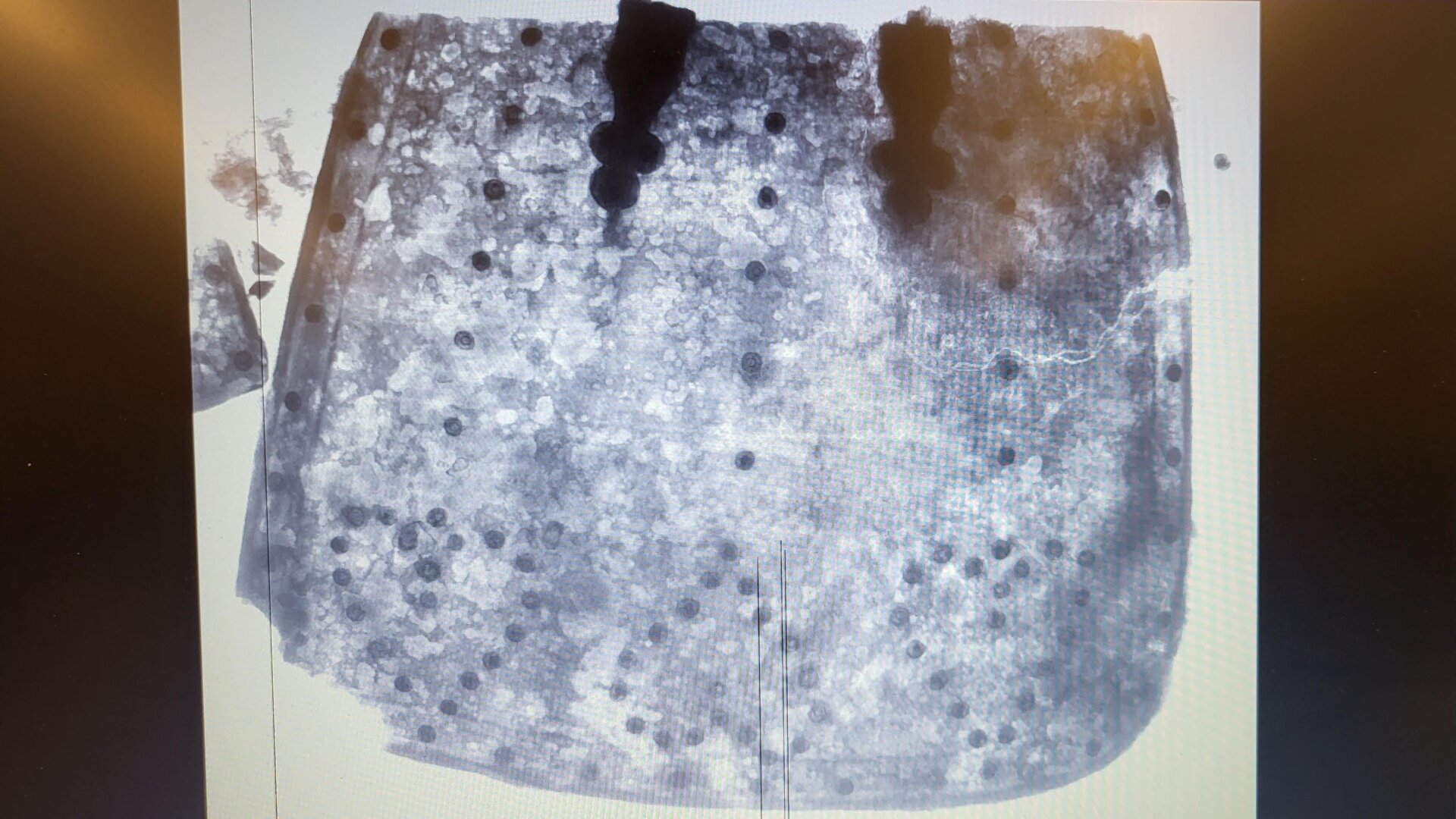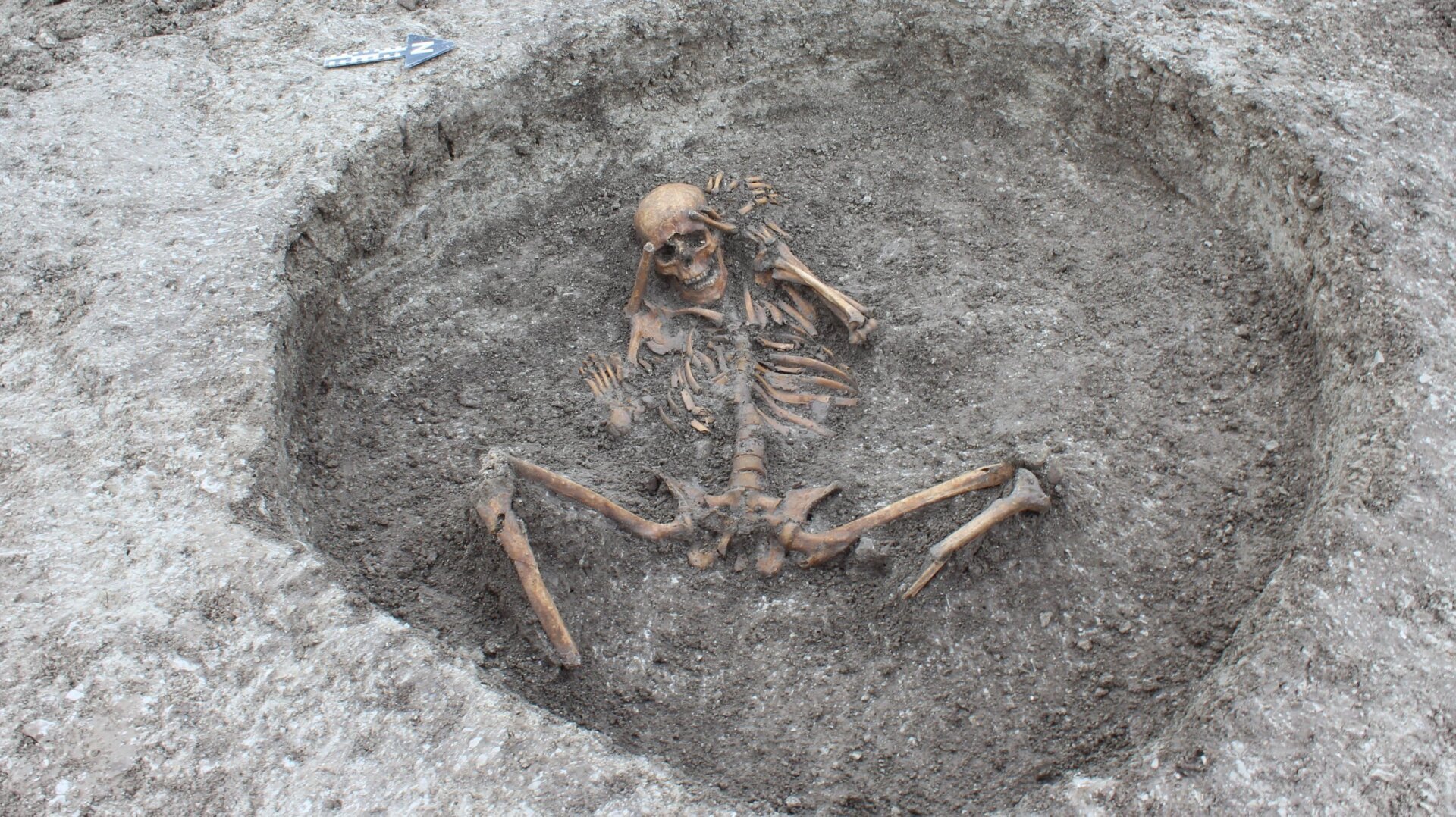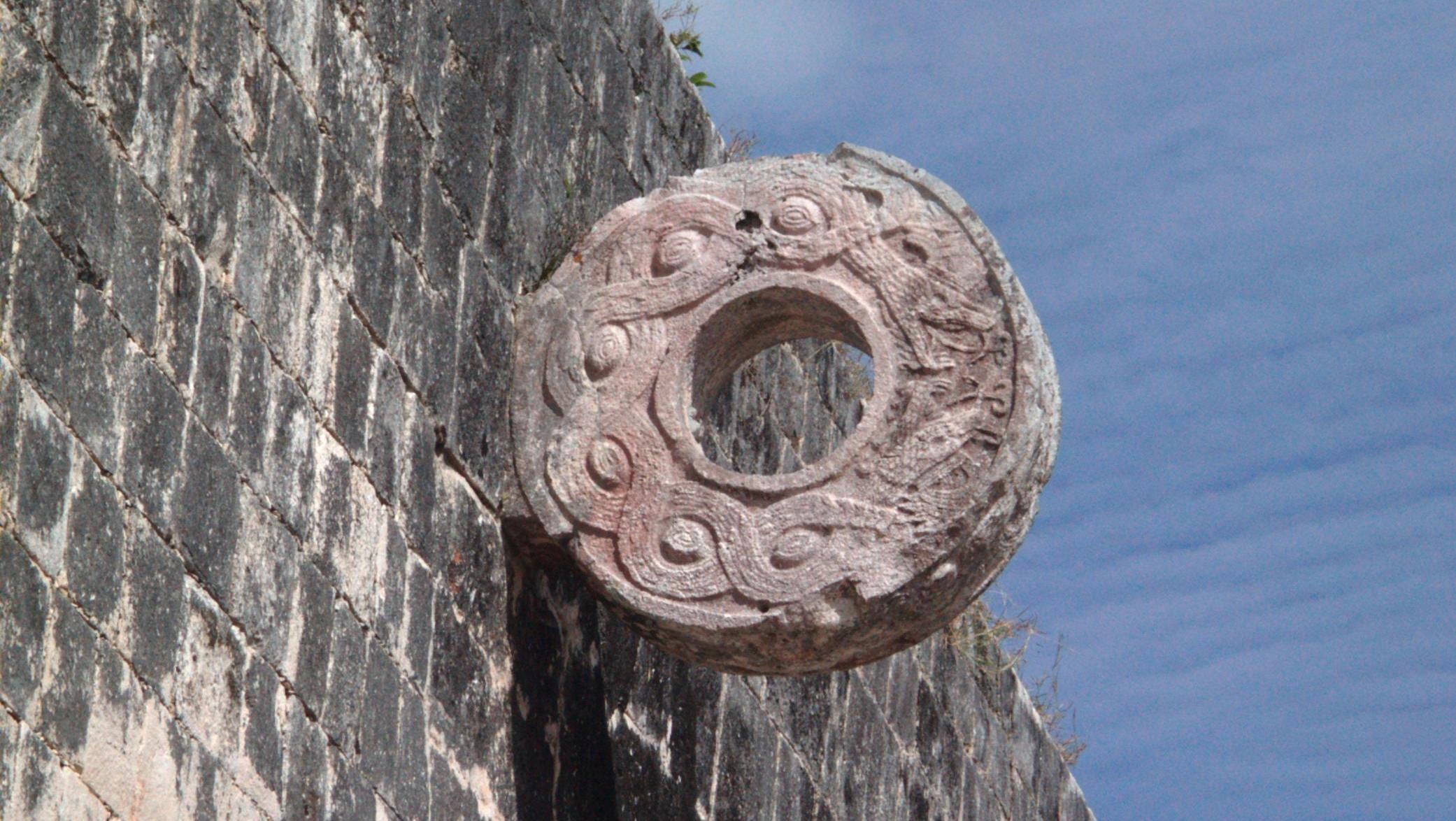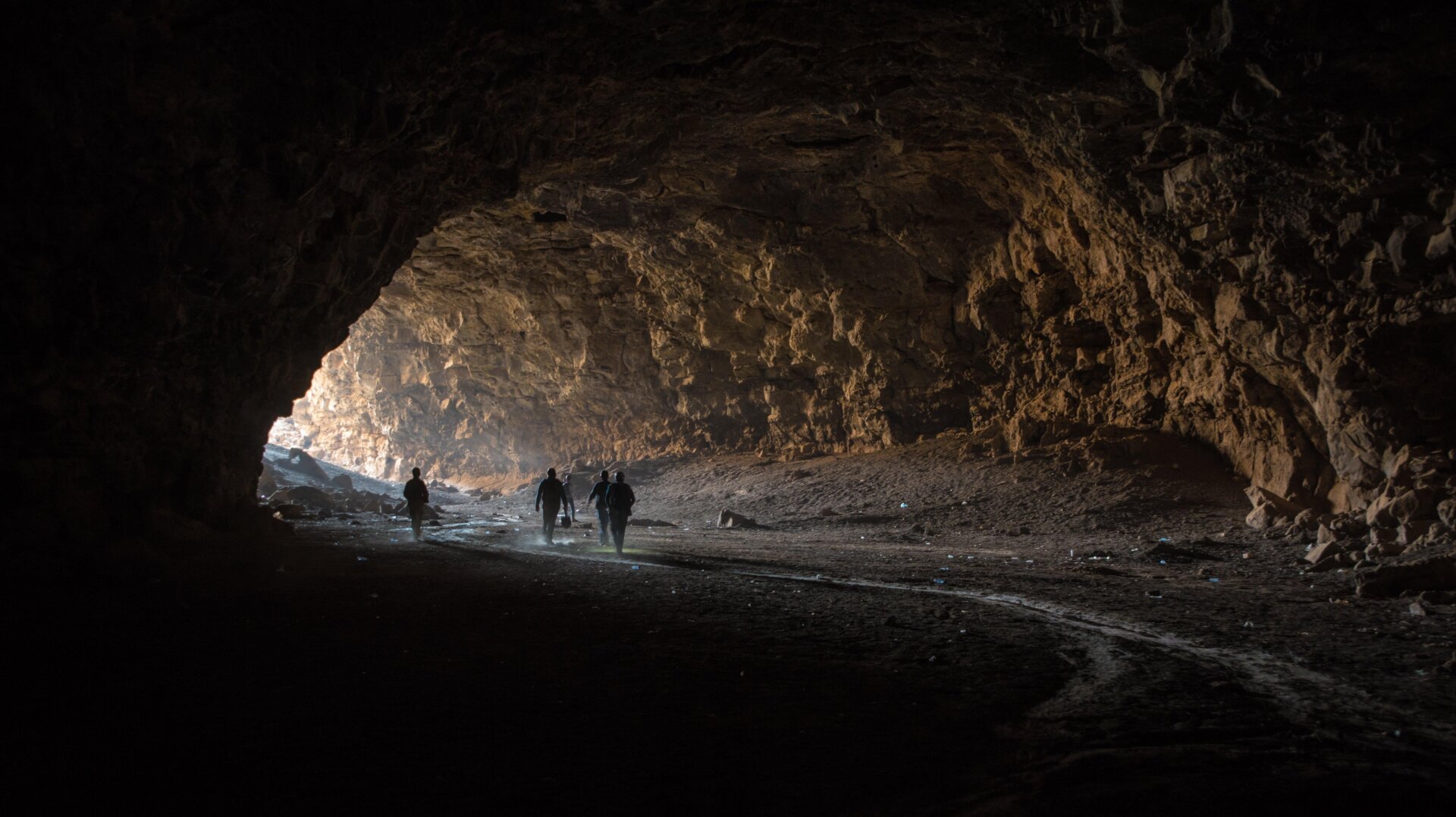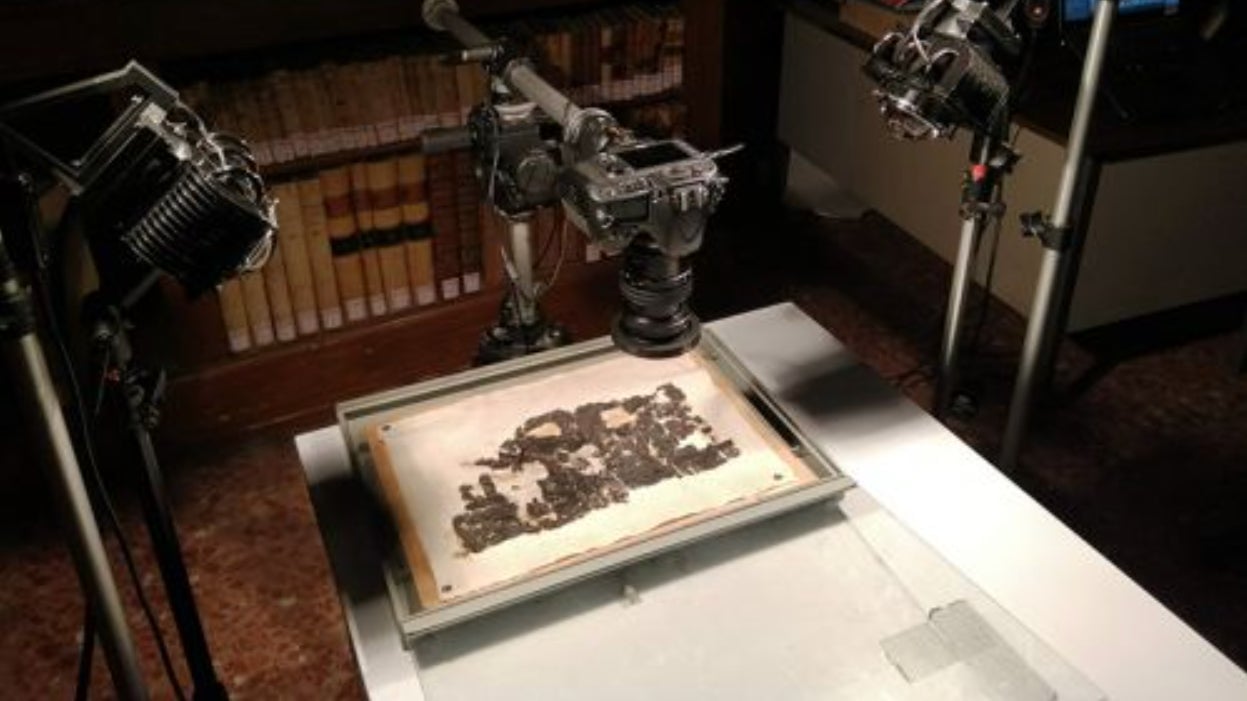A peculiar rock discovered on the South African coast may hold a significant place in human history as the oldest known artwork depicting an animal. Researchers are cautiously optimistic that the aeolianite rock, found east of Still Bay, approximately 205 miles (330 kilometers) from Cape Town, is a human-made representation of a blue stingray (D. chrysonota).
This intriguing possibility stems from the rock’s unique characteristics. Its kite-like shape, symmetrical grooves, and a blunted base – potentially signifying a ceremonially removed tail – bear a striking resemblance to the local blue stingray. The discovery of the rock on a beach further strengthens the theory that it was created as a tracing in the sand, later solidified into stone. The research team’s findings were recently published in Rock Art Research.
Analyzing the “Stingray Stone”
Paleontologist Charles Helm of Nelson Mandela University and Alan Whitfield, Emeritus Chief Scientist at the South African Institute for Aquatic Biodiversity, acknowledge that their conclusions are based on “highly informed speculation” derived from extensive experience with similar rocks. They argue, however, that the multiple levels of symmetry present in the rock strongly suggest human intervention, as the likelihood of such symmetry occurring naturally is remote. The researchers believe the rock could be an ammoglyph – a sand tracing preserved by natural processes.
Dating the Potential Artwork
Directly dating the rock would risk damaging it. However, optically stimulated luminescence dating of rocks in the surrounding area suggests the potential artwork could be around 130,000 years old. This significantly predates the currently accepted oldest animal artwork, a 43,900-year-old painting of a warty pig discovered in an Indonesian cave. Other ancient examples, like the 40,000-year-old Lion-Man figurine from Germany, also pale in comparison to the potential age of this South African find.
A Significant Discovery?
While the conclusions are tentative and the rock’s artistic merit might be debated, its potential implications are substantial. If confirmed, this “stingray stone” would rewrite our understanding of early human artistic expression. It would push back the timeline for human depictions of animals by tens of thousands of years, offering a fascinating glimpse into the minds of our distant ancestors.
Further Research Needed
It’s important to note that further research is crucial to solidify the claims surrounding this intriguing rock. While its characteristics and the surrounding evidence are compelling, the scientific community will need to conduct further analysis to definitively confirm its status as a human-made artwork.
This potential discovery highlights the ongoing quest to understand our origins and the evolution of human creativity. While questions remain, the “stingray stone” offers a tantalizing glimpse into the distant past and the potential for even older expressions of human art waiting to be unearthed.



